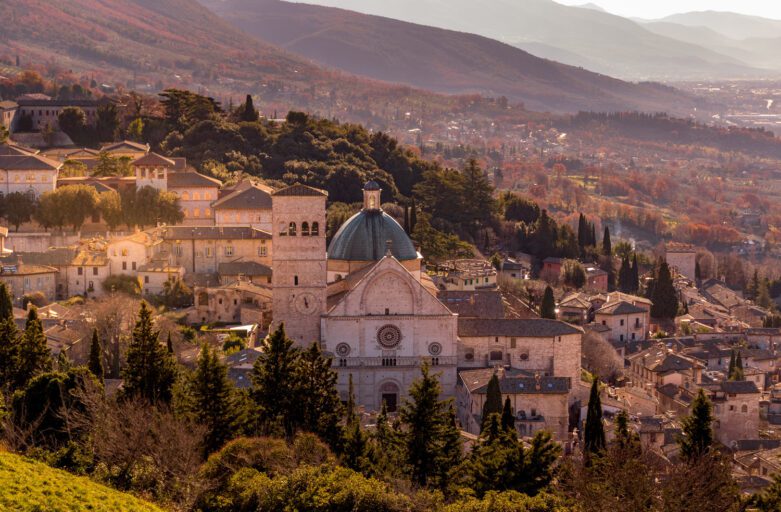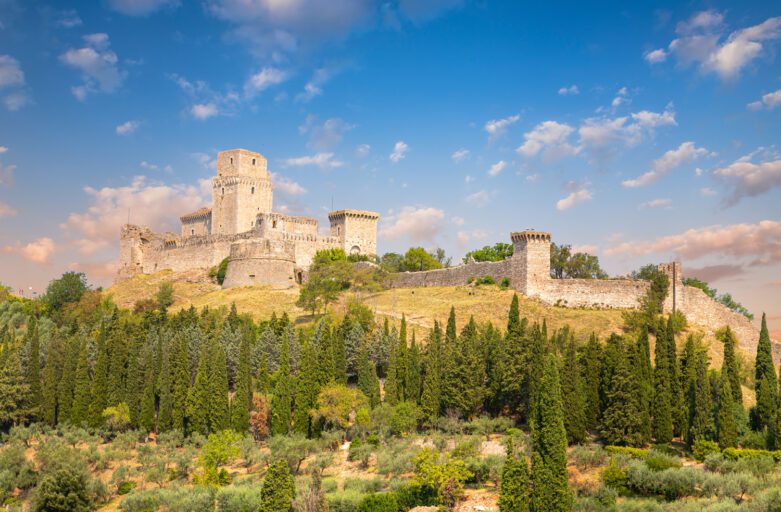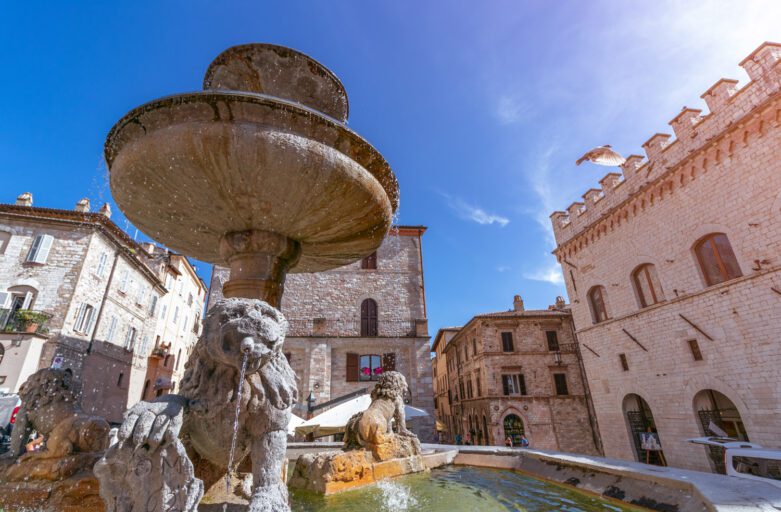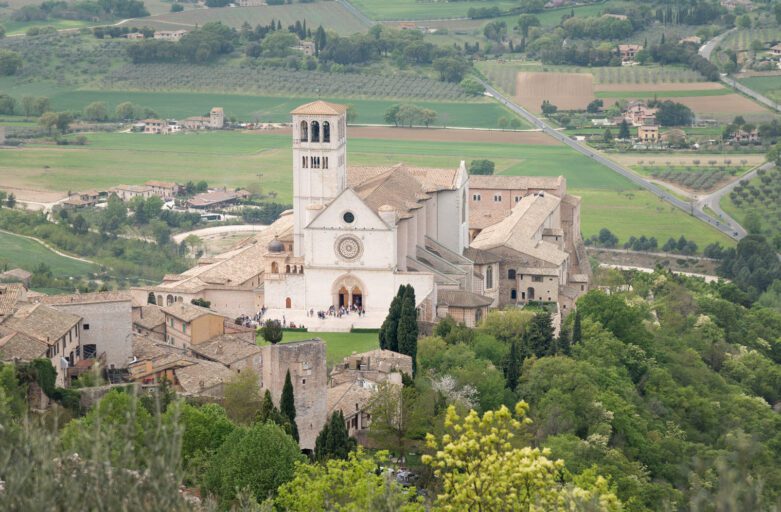Assisi’s Cathedral: info and story of Saint Rufinus and his church, from the Romanic facade to the “tug of war” conflict.
Tag: Architecture
The Citadel of Assisi
A Stronghold to Guard Assisi
So sings the Hymn of the Sentinels (Scolte) of Assisi, the town’s hymn:
The trumpet blares, the days ends already,
already the curfew song soars.
C’mon, sentinels, up to the towers,
O armed guardians, hey there!
Heads up, keep silent, and watch!
Heads up, sentinels, and watch!
Town Hall Square
The Main Square in Assisi
Piazza del Comune (the town hall square) has always been the hub of social and cultural life in Assisi. Not by chance do all the main streets from the town gates meet here.
Built upon a Roman forum, in the Middle Ages it became the place for the people’s gatherings. Therefore, here rise the most important buildings of town life: the Temple of Minerva, also used as the oldest Town Hall in Assisi (later transferred to Palazzo dei Priori, the palace of Medieval “priors”); the palace of the Capitano del popolo (the “common people’s” – actually, the middle class’ – political spokesman), and the People’s Tower.
The Basilica of Saint Francis
Saint Francis’ Legacy
When in 1226 Saint Francis of Assisi died at the age of 44, he was already very famous, and his movement – a true religious Order since 1223 – was followed by thousands of people. They immediately felt they had to build a basilica that may keep his remains, show his importance for all the faithful of that era, and preserve his memory. So, on July 15, 1228, Papa Gregorio IX – who had personally been a friend of Francis – declared him a Saint, and at the same time laid the first stone of the basilica on the hill just off the city of Assisi, northward. No more than seven years later, in 1235, the building made of two superimposed churches and a big belfry had already been completed, basically as we still see them nowadays. The Basilica of Saint Francis is undoubtedly one of the most famous and most frequently visited churches all over the world. It unites, in fact, a deep religious significance in connection with Saint Francis, and an exceptional value in itself, both historical and artistic.



